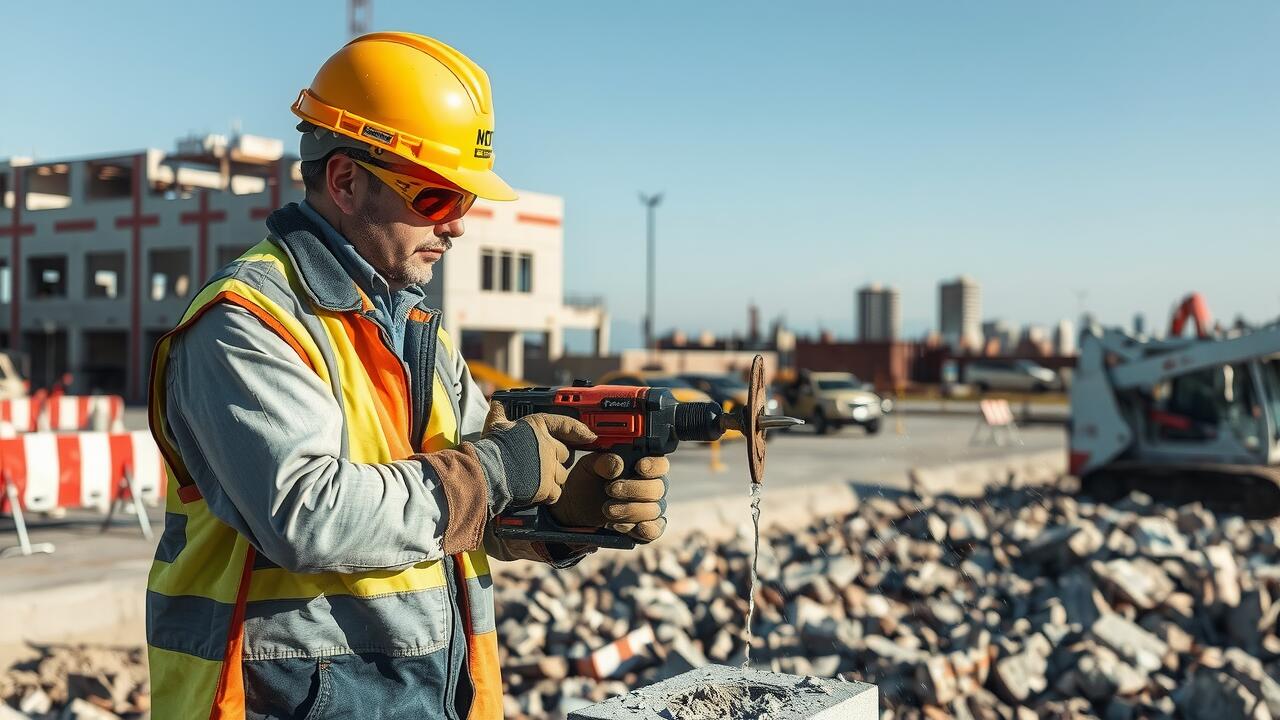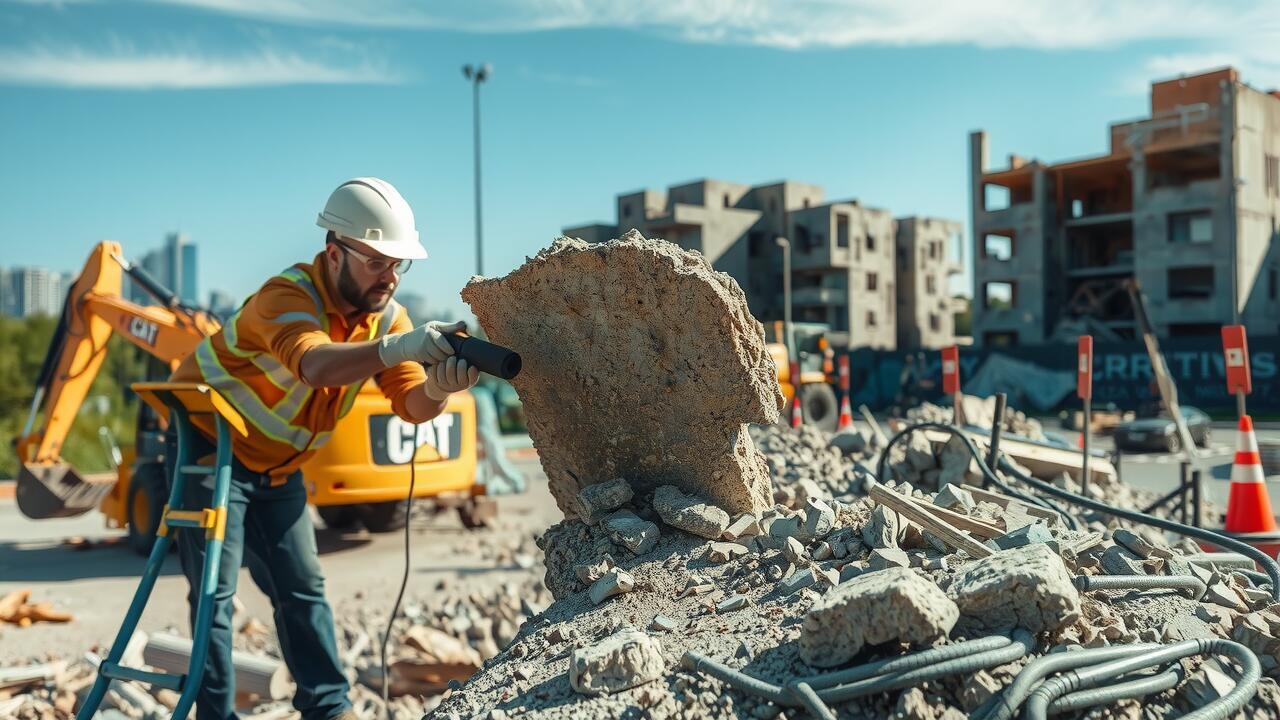
Table Of Contents
Hydraulic Equipment for Heavy Lifting
Hydraulic equipment plays a crucial role in concrete demolition, particularly for heavy lifting tasks. Hydraulic cranes and compact excavators equipped with appropriate attachments can easily handle large chunks of concrete. These machines provide the necessary power and precision to break apart even the most solid structures, making them indispensable for contractors engaged in extensive demolition projects.
In addition to cranes and excavators, hydraulic breakers are essential tools for breaking concrete surfaces. These powerful devices utilize hydraulic pressure to deliver forceful blows to concrete, effectively cracking and displacing material. This equipment not only increases efficiency but also enhances safety by allowing operators to perform tasks from a distance, reducing the likelihood of injury during the demolition process.
Concrete Splitters
Concrete splitters are a powerful tool commonly used in concrete demolition projects. They operate by applying immense hydraulic force, effectively splitting concrete structures apart without the extensive noise and vibration associated with traditional methods. This ability makes them suitable for urban environments where disturbance must be minimized. Their compact design also allows for easy maneuverability in tight spots, making them a preferred choice for residential demolition tasks.
These tools also enhance safety during concrete demolition. By avoiding the need for explosive materials or heavy machinery, operators can work with a decreased risk of accidents. Concrete splitters typically require less physical strain compared to manual methods, reducing fatigue and improving efficiency on the job. This combination of effectiveness and safety makes splitters an essential piece of equipment for contractors focused on precision and care in residential demolition projects.
Dust Control Solutions
Effective dust control solutions are essential during concrete demolition projects. Not only do they help maintain a clean workspace, but they also protect workers and surrounding environments from the harmful effects of airborne particles. Various methods can be employed to achieve optimal dust suppression, including water sprinkling systems and the use of specialized dust control products that bind particulate matter.
Implementing dust control measures enhances visibility on the job site, which is crucial for safety. Additionally, adhering to dust management practices can help meet local regulations concerning air quality. Investing in proper equipment and techniques ensures a more efficient concrete demolition process, reducing health risks and improving overall project outcomes.
Dust Collectors
Dust collectors play a crucial role in maintaining safety and cleanliness on concrete demolition sites. These machines capture airborne particles generated during cutting, breaking, or grinding concrete. A high-quality dust collector removes fine dust from the air, creating a healthier workspace for workers. Preventing dust from settling not only improves visibility but also reduces the risk of respiratory issues that can arise from prolonged exposure to silica dust.
Investing in a reliable dust collection system enhances the efficiency of concrete demolition projects. These systems come in various sizes and capacities, catering to diverse job requirements. Portable options offer flexibility for smaller residential projects, while larger, stationary units suit more extensive demolition tasks. Selecting the right dust collector ensures compliance with safety regulations, safeguarding workers and the surrounding environment during concrete demolition activities.
Selecting the Right Concrete Saw
When selecting the right concrete saw for your project, it’s essential to consider the scope of the concrete demolition tasks at hand. Different types of saws offer unique features suited for various applications, from small-scale renovations to large infrastructure projects. Factors such as blade size, power type, and intended cutting depth will influence your choice. For instance, a handheld concrete saw may be ideal for tighter spaces, while larger, walk-behind models tackle expansive areas more effectively.
Additionally, the type of material and thickness of the concrete will impact the saw selection. Diamond blades are often preferred for their durability and efficiency, particularly when cutting reinforced concrete. Assessing the environment where the demolition will occur is also crucial. Sound levels and dust generation can dictate whether you need more specialized equipment, such as wet saws or gas-powered options, to enhance safety and performance during the concrete demolition process.
Types of Concrete Saws
Concrete saws are essential tools for effective concrete demolition. They come in various types, each tailored for specific tasks. The most common categories include cutoff saws, wall saws, and flat saws. Cutoff saws are portable and ideal for smaller jobs, while wall saws provide precise cuts in vertical surfaces. Flat saws are designed for cutting horizontal surfaces and are often used for large-scale projects.
When selecting a concrete saw, consider the thickness and type of concrete being worked on. Blade size and type also play a crucial role in performance and efficiency during demolition work. For instance, diamond blades are popular for their durability and ability to cut through reinforced concrete. Choosing the right saw can greatly impact the speed and ease of the concrete demolition process.
FAQS
What equipment is essential for heavy lifting during concrete demolition?
Hydraulic equipment, such as hydraulic jacks and lifts, is essential for heavy lifting during concrete demolition, as they provide the power needed to move and remove heavy concrete structures safely.
What are concrete splitters and how do they work?
Concrete splitters are tools that use hydraulic power to generate a force that fractures concrete. They are an effective alternative to traditional demolition methods, offering precision and reduced vibration.
Why is dust control important in concrete demolition?
Dust control is important in concrete demolition to ensure a safe and clean work environment. It helps reduce respiratory hazards for workers, minimizes environmental impact, and maintains visibility on the job site.
How do dust collectors help maintain clean workspaces?
Dust collectors capture airborne dust particles generated during demolition, keeping the workspace cleaner and safer. They improve air quality and help comply with health and safety regulations.
What factors should I consider when selecting a concrete saw?
When selecting a concrete saw, consider factors such as the type of concrete being cut, the thickness of the material, the required precision, and whether you need a portable or stationary saw for your project.

